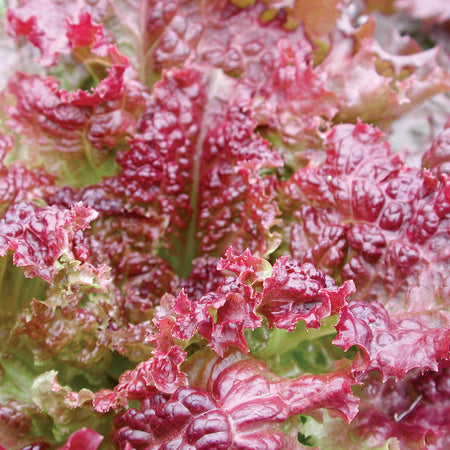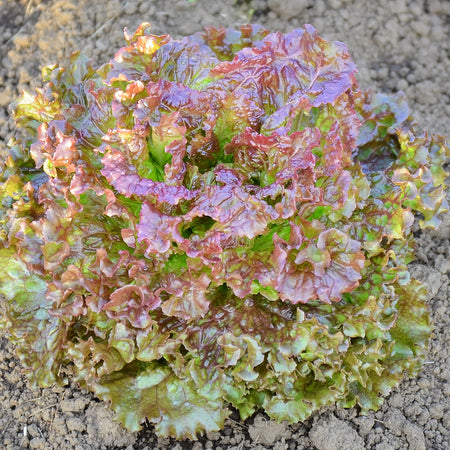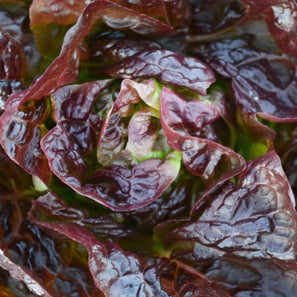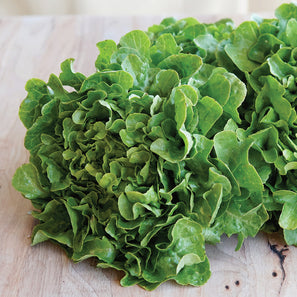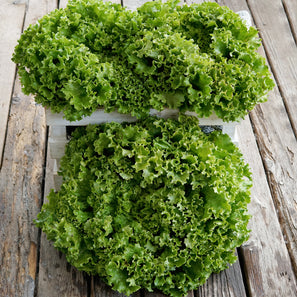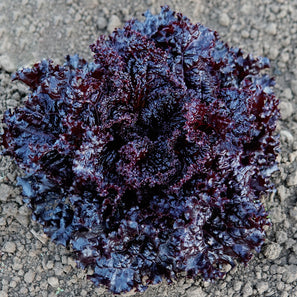NEW RED FIRE
Product Description:
| Soil Temp for Germ | 40–80°F |
| Seed Depth | ⅛" |
| Seed Spacing | 1" |
| Days to Emergence | 2–15 |
| Thin Plants to | 10–16" |
| Row Spacing | 16–18" |
| Fertilizer Needs | Low |
| Minimum Germination | 80% |
| Seeds per Gram | ≈ 800 |
| Seed Life | 3 years |
Lactuca sativa
Days to maturity are calculated from date of direct seeding.
Culture
• Lettuce performs best in cool weather, 60-70°F, and grows in a wide range of soil types
• Plant as early as soil can be worked
• For extended harvest, plant every 2-3 weeks and choose heat-tolerant varieties for summer
• Lettuce seed can be sown every month from February—October
• A cold frame and cold-hardy varieties can stretch the spring and fall growing season into the winter months
• Apply 1 cup of TSC's Complete fertilizer per 10 row feet, and 1 inch of compost
• 1 gram of seed will sow 30 row feet
• Consistent, even watering is critical for best results
Direct Sowing
• Use row cover to improve germination and prevent soil crusting
• As soon as 2-3 true leaves have formed, thin loose-leaf types to 10-14 inches apart; icebergs, butterheads, and romaines to 12-16 inches apart
Transplanting
• Start indoors 4-6 weeks before anticipated transplant date
Insects & Diseases
• Common pests: Aphids and slugs
• Pest control: Strong spray of water for aphids or applications of Pyrethrin or Neem oil, baits, traps, or Cabbage Collars for slugs
Harvest & Storage
• While picking individual leaves helps extend the season somewhat, all eventually become bitter as they begin to bolt
What is pelleted seed?
Seed that has been coated with a clay-based material to form a larger, round shape. This makes planting by hand or mechanical seeder easier and allows for more controlled sowing of small seeds such as carrots or lettuce. All pelleted seed has a National Organic Program (NOP) approved coating.
For best results, store pelleted seed in an air-tight container and use within one season.
What is seed tape?
Seed tapes are perfectly straight rows of precisely spaced crops. No more having to thin seedlings! This biodegradable tape will plant a row 5 meters (16 feet, 5 inches) long. Simply lay it in a furrow and cover with a light layer of sifted compost or soil, water and wait. Save yourself a heap of planting time with these popular vegetable and herb staples.
KEY TO LETTUCE DISEASE RESISTANCE AND TOLERANCE
HR indicates high resistance.
IR indicates intermediate resistance.
BR | Bottom Rot
DM* | Downy Mildew
F* | Fusarium Wilt
LD | Lettuce Drop
LMV* | Lettuce Mosaic Virus
Nr* | Lettuce Aphid
PM | Powdery Mildew
Rs | Corky Root
TBSV | Tomato Bushy Stunt Virus (Lettuce Dieback Complex)
* Numbers indicate specific disease race.

